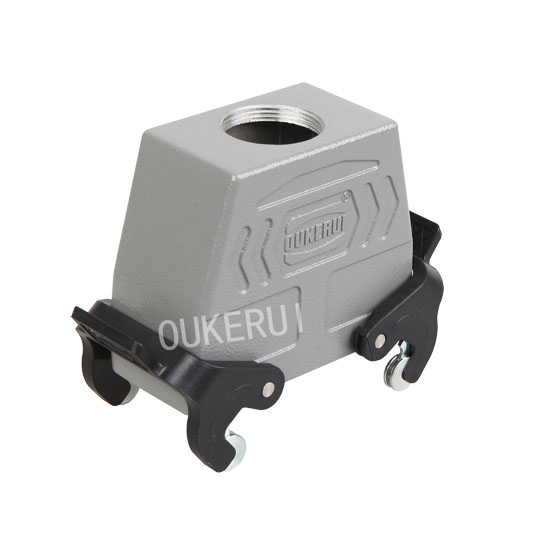How Heavy Duty Connector Hoods Accommodate Different Cable Sizes
2024-07-11
Introduction
Heavy-duty connectors are essential components in industrial and commercial applications, providing robust and reliable connections in harsh environments. A crucial part of these connectors is the connector hood, which not only protects the internal connections but also accommodates different cable sizes. This blog will explore how heavy-duty connector hoods are designed to fit various cable sizes, ensuring optimal performance and reliability.
1. Understanding Heavy Duty Connector Hoods
Heavy-duty connector hoods are protective enclosures that house the connectors and the connected cables. They are designed to withstand challenging conditions such as dust, moisture, and mechanical stress. Here’s how they cater to different cable sizes:
- Modular Design: Many heavy-duty connector hoods feature a modular design that allows for flexibility in accommodating various cable sizes. These designs include adjustable or interchangeable components that can be adapted to fit different diameters.
2. Cable Gland Integration
One of the primary ways heavy-duty connector hoods accommodate different cable sizes is through the integration of cable glands:
- Cable Glands: Cable glands are devices that attach and secure the cable to the hood, providing strain relief and sealing against environmental elements. They come in various sizes to fit different cable diameters, ensuring a tight and secure fit.
- Adjustable Glands: Some connector hoods feature adjustable cable glands that can be tightened or loosened to fit a range of cable sizes. This flexibility allows for easy adaptation without the need for multiple gland sizes.
3. Insert and Adapter Options
Heavy-duty connector hoods often use inserts and adapters to accommodate various cable sizes:
- Insert Options: Inserts are internal components that can be swapped out to fit different cable diameters. These inserts ensure that the cables are securely held within the hood, preventing movement and potential damage.
- Adapters: Adapters can be used to modify the opening size of the hood, allowing for the accommodation of larger or smaller cables. This adaptability is crucial in applications where cable sizes may vary.
4. Customizable Entry Points
Some heavy-duty connector hoods offer customizable entry points to fit different cable sizes:
- Multiple Entry Points: Hoods with multiple entry points can accommodate several cables of different sizes simultaneously. Each entry point can be fitted with the appropriate gland or insert, ensuring all cables are securely managed.
- Custom Cutouts: For unique applications, custom cutouts can be made in the hood to fit specific cable sizes. This customization ensures a perfect fit and optimal sealing, regardless of the cable diameter.
5. Material Flexibility
The materials used in the construction of heavy-duty connector hoods also play a role in accommodating different cable sizes:
- Flexible Materials: Some hoods are made from flexible materials that can slightly expand or contract to fit different cable diameters. This flexibility helps in creating a snug fit without the need for precise measurements.
- Durable Construction: Regardless of the material, heavy-duty connector hoods are designed to be durable and resilient, ensuring they can withstand the rigors of industrial environments while accommodating various cable sizes.
6. Ensuring Optimal Performance
Accommodating different cable sizes is crucial for maintaining the performance and reliability of heavy-duty connectors:
- Secure Connections: Ensuring that cables are securely held within the hood prevents movement that could lead to disconnections or damage.
- Environmental Protection: Properly fitted cables and hoods provide better protection against dust, moisture, and other environmental factors, enhancing the longevity and reliability of the connection.
- Strain Relief: Correctly sized glands and inserts provide strain relief, reducing the risk of cable damage due to tension or bending.
Conclusion
Heavy-duty connector hoods are essential in managing and protecting connections in industrial environments. By incorporating features such as modular designs, cable glands, inserts, adapters, and customizable entry points, these hoods can accommodate a wide range of cable sizes. This adaptability ensures secure, reliable, and durable connections, making heavy-duty connectors a vital component in various applications. Understanding how these hoods accommodate different cable sizes can help in selecting the right connector for specific needs, ensuring optimal performance and longevity.



